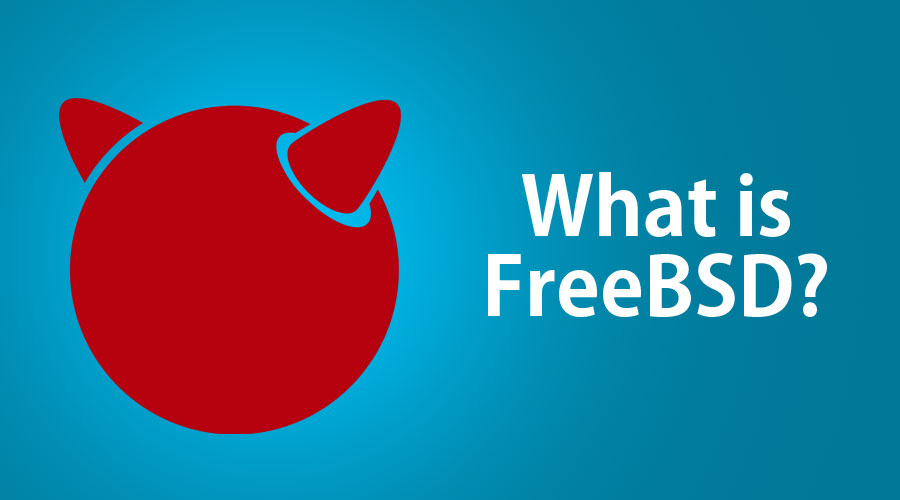Have you ever wondered what powers the robust and highly regarded FreeBSD operating system? Well, let me give you a hint: it’s a kernel that sets it apart from other operating systems. FreeBSD utilizes a unique kernel that prioritizes stability and security, ensuring a reliable and secure computing experience. But that’s not all there is to it. There are other intriguing aspects to explore, including the file systems and package management systems supported by FreeBSD, as well as its hardware and device support. So, if you’re interested in uncovering the secrets behind the FreeBSD kernel and discovering how it differs from other operating systems, you won’t want to miss what’s coming next.
Evolution of Freebsd From Unix
FreeBSD evolved from the Unix operating system through a series of updates and modifications, resulting in a highly stable and secure BSD operating system distribution. This evolution allowed FreeBSD to differentiate itself from other Unix-based systems and establish its own unique identity.
One significant aspect of this evolution is the licensing differences between FreeBSD and Unix. While Unix is proprietary and has restrictive licensing, FreeBSD is licensed under the BSD license, which allows for more freedom in accessing, sharing, and modifying the source code without the requirement to contribute back. This licensing difference has contributed to the vibrant community support and development that FreeBSD enjoys.
In terms of performance scalability, FreeBSD is known for its excellent performance on servers and efficient handling of high loads. It has been preferred for network-intensive applications due to its optimized networking stack. Additionally, FreeBSD offers good support for server hardware and network devices, making it a reliable choice for various hardware configurations.
Licensing Differences: GPL Vs BSD
As we shift our focus to the licensing differences between FreeBSD and Unix, it is essential to understand how these divergent licenses impact the usage and development of the operating systems. FreeBSD is licensed under the BSD license, while Unix is licensed under the GNU General Public License (GPL). The BSD license allows for open source licensing, source code sharing, and modification without the requirement to contribute back to the community. This means that FreeBSD software can be incorporated into proprietary applications without releasing the source code. On the other hand, the GPL license used by Unix requires that any modifications or enhancements made to the software be shared with the community. This promotes the open source philosophy and ensures that the community benefits from any improvements made to the software. While both licenses have their advantages and disadvantages, the choice between BSD and GPL ultimately depends on the goals and priorities of the individual or organization using the operating system. Both FreeBSD and Unix have strong community support, with dedicated developers and enthusiasts contributing to their development and improvement.
System Scope: Kernel Vs Complete OS
The system scope of an operating system can vary between being just a kernel or a complete operating system. Understanding the differences between the two can help you make informed decisions about your operating system needs. Here are some key points to consider:
- Evolution: The concept of a complete operating system has evolved over time as the need for more functionality and customization grew. This led to the development of operating systems like FreeBSD, which includes both the kernel and the software required for a fully functional system.
- Advantages of a Complete Operating System:
- Seamless integration: With a complete operating system, all components are designed to work together, resulting in a more stable and efficient system.
- Customization: A complete operating system allows for greater customization, as you have control over all aspects of the system.
- Development: The development of a complete operating system involves a dedicated team that can focus on improving all aspects of the system, leading to better overall performance and security.
- Limitations of a Complete Operating System:
- Limited flexibility: The components of a complete operating system are tightly integrated, making it difficult to swap out individual components or make significant changes.
- Resource consumption: A complete operating system may require more resources compared to a kernel-only system, which can impact performance on lower-end hardware.
- Advantages of a Kernel-only System:
- Flexibility: A kernel-only system, like Linux, allows for greater flexibility as you can choose and customize the additional components according to your needs.
- Resource efficiency: Kernel-only systems tend to be more resource-efficient, making them suitable for embedded systems or low-resource environments.
Comparison Table: Linux Vs Freebsd
Linux and FreeBSD can be compared using a comprehensive table that highlights their key differences and similarities.
| Comparison Aspect | Linux | FreeBSD |
|---|---|---|
| Evolution of FreeBSD | Evolved from Unix through updates and modifications | Developed from scratch by Linus Torvalds |
| Licensing Differences | Licensed under GNU General Public License (GPL) | Licensed under the BSD license |
| Kernel and File System | Linux uses the Linux kernel, a monolithic kernel, and supports various file systems like ext4, XFS, and Btrfs | FreeBSD uses the FreeBSD kernel, a hybrid kernel, and uses the UFS file system as default, with support for ZFS |
| Package Management | Package management in Linux depends on the distribution and uses systems like apt, yum, and pacman | FreeBSD has excellent package management with the Ports Collection, a source-based package management system |
| Community Support | Linux has a larger user base and a vast community of developers and enthusiasts, providing extensive documentation, forums, and online resources | FreeBSD has a smaller but dedicated community that focuses on stability and security, offering excellent documentation and mailing lists for support |
The evolution of FreeBSD can be traced back to its roots in Unix, while Linux was developed from scratch by Linus Torvalds. The licensing differences between the two are notable, with Linux being licensed under the GNU GPL and FreeBSD having its own BSD license. In terms of the kernel and file system, Linux uses the Linux kernel and supports various file systems, while FreeBSD uses the FreeBSD kernel and primarily uses the UFS file system with support for ZFS. Package management differs as well, with Linux distributions relying on different systems depending on the distribution, while FreeBSD utilizes the Ports Collection. Finally, community support varies, with Linux having a larger user base and more extensive resources, while FreeBSD has a smaller but dedicated community focused on stability and security.
Kernel, File System, and Package Management
When it comes to the kernel, file system, and package management, FreeBSD and Linux have distinct differences and approaches. Here are some key points to understand about these aspects:
- Kernel development: Linux uses the Linux kernel, which is a monolithic kernel designed to support a wide range of hardware devices. On the other hand, FreeBSD uses the FreeBSD kernel, which is a hybrid kernel focused on stability and security.
- File system options: Linux supports various file systems such as ext4, XFS, and Btrfs. FreeBSD uses the UFS file system as its default, but also supports the advanced ZFS file system, which offers features like data integrity, compression, and snapshots.
- Package management tools: Linux distributions use different package management systems like apt, yum, and pacman. These tools allow easy installation, update, and removal of software packages. On the other hand, FreeBSD uses the Ports Collection, a source-based package management system. This system allows users to compile and customize software during installation.
- Compatibility with different distributions: Linux file systems are more widely used and have better compatibility with different distributions. This is because Linux has a larger user base and more widespread support from various vendors.
Both FreeBSD and Linux have strong community support, with extensive documentation, forums, and online resources available. The communities actively contribute to the development and improvement of their respective operating systems, ensuring ongoing support and development.
Community and Support: Linux Vs Freebsd
With regards to community and support, it is important to highlight the differences between Linux and FreeBSD. Linux has a larger user base and a vast community of developers and enthusiasts. The Linux community provides extensive documentation, forums, and online resources for users to seek support and find answers to their questions. On the other hand, FreeBSD has a smaller but dedicated community that focuses on stability and security. The FreeBSD community offers excellent documentation and mailing lists for support, where users can discuss issues and seek help from experienced members. Both communities actively contribute to the development and improvement of their respective operating systems. Linux has a more diverse range of online resources, forums, and mailing lists due to its larger user base. However, FreeBSD’s smaller community allows for more focused and personalized support. In terms of development contributions, both communities actively contribute code, bug fixes, and improvements to their respective operating systems. The table below summarizes the community and support differences between Linux and FreeBSD.
| Linux | FreeBSD |
|---|---|
| Larger user base | Smaller but dedicated community |
| Extensive online resources | Excellent documentation and mailing lists |
| Diverse forums and support channels | Focused and personalized support |
| Active development contributions | Active development contributions |
Performance, Security, and Hardware Support
For optimal performance, enhanced security, and extensive hardware support, considerations must be made when comparing Linux and FreeBSD. Here are some key points to consider:
- Performance Optimization: FreeBSD is known for excellent performance on servers and efficient handling of high loads. Linux also offers good performance and scalability options, with various kernel options available for optimizing performance.
- Network Intensive Applications: FreeBSD is often preferred for network-intensive applications due to its focus on stability and security. Linux, on the other hand, provides a wide range of networking features and options.
- Scalability Options: Both FreeBSD and Linux offer scalability options, allowing users to scale their systems according to their needs. FreeBSD’s stability and performance make it a popular choice for large-scale deployments.
- Hardware Architecture Support and Storage Device Compatibility: Linux has a wide range of hardware support due to its large user base, supporting various architectures. FreeBSD, on the other hand, has good support for server hardware and network devices. Additionally, FreeBSD offers excellent support for storage devices, particularly with its support for the ZFS file system.
When considering performance, security, and hardware support, it is important to evaluate the specific requirements of your system and choose the operating system that best meets those needs.








